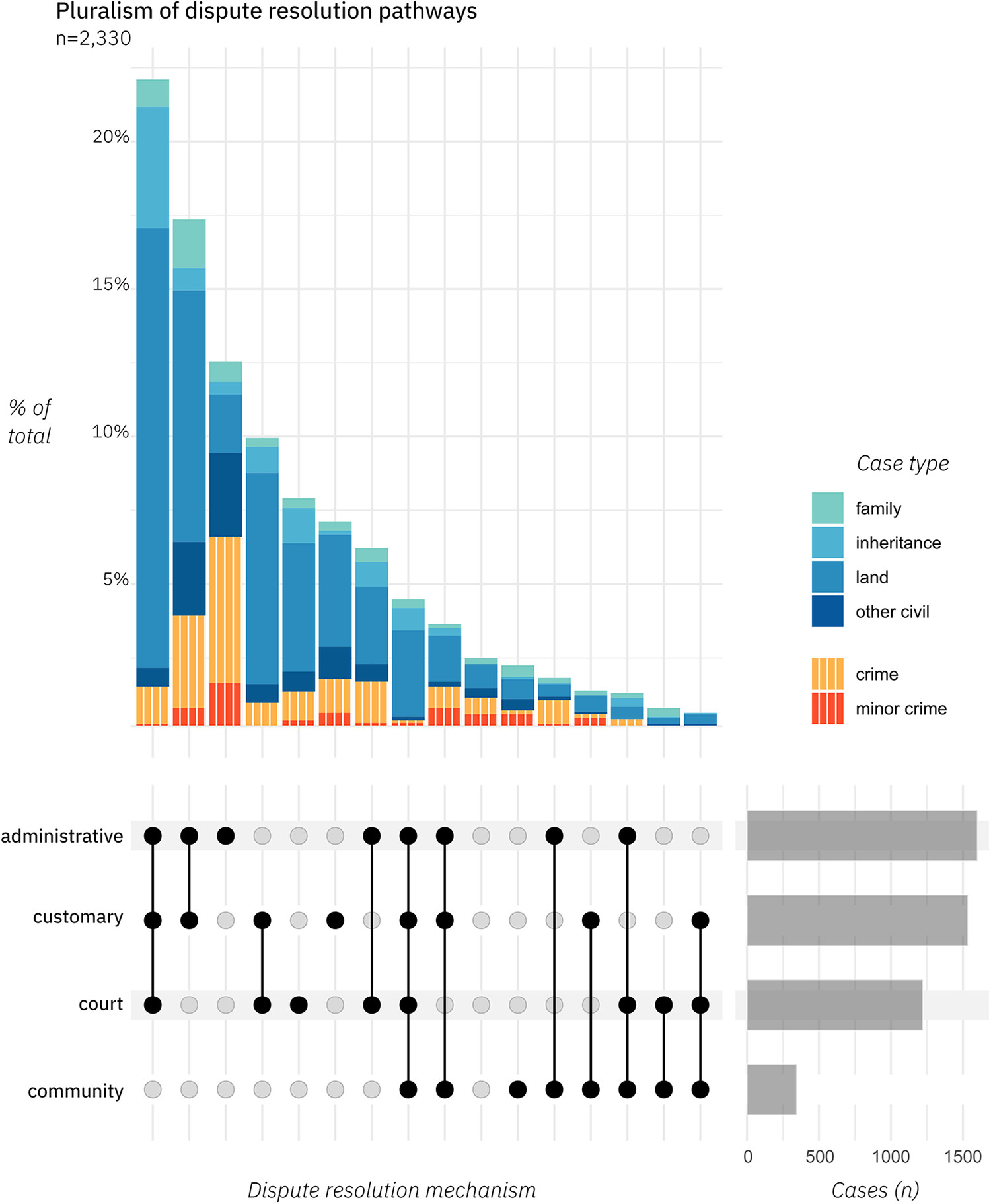
The committee consisting of Anita Gohdes (Hertie School), Nils W Metternich (University College London), and Yuri Zhukov (University of Michigan) has awarded the tenth JPR Best Visualization Award to Imane Chaara (University of Oxford), Jean-Benoît Falisse (University of Edinburgh), and Julien Moriceau (Université Catholique de Louvain). The prize-winning publication is a research article titled 'Does legal aid improve access to justice in ‘fragile’ settings? Evidence from Burundi' and was published in Journal of Peace Research 59(6): 810–827. The article focuses on the impact of a locally provisioned legal aid program on individuals' use of dispute resolution fora, legal agency, and trust in judicial institutions. The authors demonstrate that the legal aid provided mainly increases the participants' use of courts. A diverse set of visualizations are effectively used to describe the study design, the underlying data, and the empirical results. The visualizations benefit from clear legibility of labels, precise captions, and an innate sense of graphic design. These features allow the reader to easily access the visualized information even when multiple dimensions are presented at once (e.g. Figure 2 and 4) and increase the self-sufficiency of graphics to tell a coherent substantive story. The article also follows highest standards regarding the use of shading and color gradients to enable the complete display of visualized information in color as well as black and white print. The committee found that the use of excellent visualizations, throughout the article, demonstrates our discipline’s state of the art and therefore Imane Chaara, Jean-Benoît Falisse, Julien Moriceau are truly deserving winner of this year's JPR Best Visualization Award.
The award is USD 500.
Honourable mention goes to:
Lloyd Lyall (2022) Diverse neighbors and post-conflict recovery at the village level: Evidence from Iraq after ISIL. JPR 59(4): 543-561.






